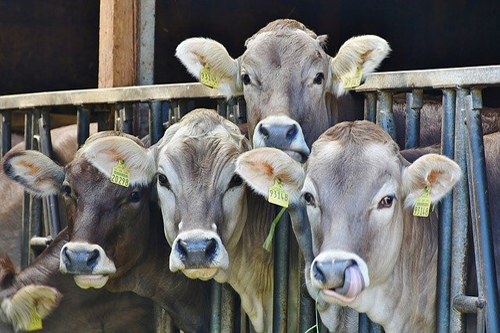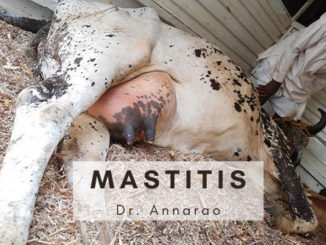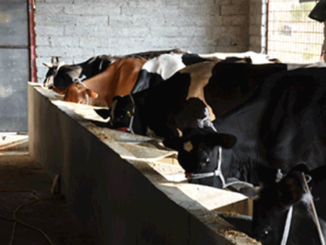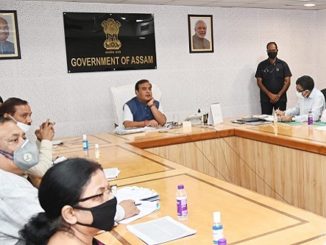The livelihood of the people in the country depends on farming and the animal husbandry is a major component of it. The animal products like milk, egg and meat complements to the crop based agriculture. Animal Husbandry provides steady source of income and regular availability of food, throughout the year unlike seasonal income from agriculture. The livestock are also useful for their contribution for draught purpose. The processing of livestock by products provides additional income to the farmers. The livestock are also comparatively less sensitive to climate and atrocities of weather than crops as they can be protected by virtue of their mobility and proper housing. Thus the farmers who practice animal husbandry with crop based agriculture are protected against total loss resulting from crop failure due to climatic atrocities or disasters. Besides animal can also be considered as live saving accounts which can be sold or liquidated or kept as collateral for loan in acute emergency or need of the livestock owners.

The livestock sector contributes to 13% of global calories and 28% of global protein consumption besides essential vitamins and minerals in the form of milk, meat and eggs (FAO, 2011). In spite of the tremendous development in livestock sector, animal productivity and per capita consumption of foods of animal origin remains low in India. The total cultivable land in the world is 1.5 billion hectare and has recorded an increase of 12 % between 1960 to 2010 with a simultaneous increase in the productivity of crops by 150-200%. It is estimated that 0.22 hectares of land is required to feed one person and hence total cultivable land (1.5 billion hectares) available in the world is not sufficient to cater to the food requirements of seven billion world population. Owing to increasing population and limited land available for cultivation of food crops for human consumption, alternate source of food like livestock products will play important role in future. It is expected that by 2050, the global demand for eggs will increase by 65-70 % while that of dairy products, meat of farm animal origin will increase by 80-100%. An increase in demand for poultry meat is also expected by 170% by the year 2050. Considering the indispensable contribution of livestock to the lives of rural poor and human nutrition, livestock based interventions holds the promise of ensuring food security to the growing human population in years to come inspite of shrinking land resources.
The trends in the past reveal highest growth in demand will occur in Asia, Africa and Latin-America, especially in middle class society, which comprises two billion of seven billion world’s population. The anticipated increase in the population of middle class is expected to be five billion of a population of nine billion total population of the world in 2050. Considering the indispensable role of livestock sector to meet the, FAO came up with a published report titled ‘Livestock’s Long Shadow’ in 2006. This report clearly demonstrated that current animal production practices place severe pressure on the environment, through emissions to air, water and soil and via utilization of natural resources, including land, water and fossil energy. In recent years, worldwide livestock production systems have intensified in terms of productivity per animal or unit of land or labour, which simultaneously raise these concerns. Expensive land and high labour costs resulted in the implementation of efficient farming practices including smart breeding programmes, customized nutrition, specific animal care, modern housing and environmental technologies. At present the livestock sector, is responsible for about 15% of global greenhouse gas (GHG) emissions, whereas it uses about 70% of the available agricultural land and represents about 8% of global water withdrawals. A major challenge to the livestock production sector is thus to foster a sustainable food security, in order to feed the world within the carrying capacity of planet earth.
India with 3.28 million sq. km of land surface is endowed with diverse livestock species which constitutes about 12 % of the world livestock population. The country has distinction of housing largest buffalo population (108.7 million) in the world. India rank second in cattle (190.9 million) and goat (135.2 million) and third in sheep (65.1 million) population in the world. India rank first in milk production in the world, which is attributed to large numbers of livestock. The average productivity of crossbred cattle (7 kg/day), buffalo (3.8 kg/day) and indigenous cattle (2.3 kg/day) though increased in the country over last 10 years from their respective values of 5.9, 3.3 and 2.7 kg/day, but still the progress is meager when compared to the productivity in developed countries. Most of the livestock in the country is owned by small and marginal farmers. The country’s cattle population is mostly constituted by indigenous or non descript breeds (79.15%) whereas the crossbreds accounts for 20.8% of total cattle population(Livestock census, 2012). The low productivity of non descript / indigenous cattle population has led to a distinct decline in their numbers and their share in total cattle population from 93% in 1992 to 79% in 2012. There is need to identify major constraints and ensure availability of minimum critical inputs like improvement of genetic potential, nutritional supplements especially energy and minerals to enhance productivity of animals. Establishing processing industry in rural areas for processing and value addition and waste management of animal products will add to the process of ensuring sustainability of livestock rearing and generating employment for rural youths.
The animal health is a major component where interventions can be made to ensure better productivity besides ensuring better health for the individuals of the society. The livestock are responsible for transmission of many zoonotic diseases to human being. Approximately 2.4 billion cases of human illness and 2.2 million deaths occurs due to zoonotic diseases. There intensive measures to control, transmissible diseases by hygienic practices, quarrentine vaccination etc. should be done. Besides improvement of animal health monitoring and surveillance needs to be done by strengthening disease forecasting services, formulation and implementation of programmes on surveillance and epidemiology of diseases of zoonotic importance.
There is deficiency of feeds and fodders in the country besides availability of fodder seed are also a great concern. In past years though the fodder deficiency status has gone down, but still much remains to be done to ensure optimum fodder availability to our livestock. Strategies like utilization of land under panchayats, and waste lands in villages as pasture or grazing lands can be done, identification of cluster of villages for production of fodder seeds can be done. The surplus straw available can be enriched with urea-molasses treatment. The feed formulation for animals should be such that ingredients/ supplements to boost rumen microflora or other additional protein supplements like Azolla Carolina (water fern) should be provided. As livestock consumes approximately 1/3rd of worlds cereal grain which could otherwise would have been useful for human diet, therefore, it should be ensured that maximum share of their diet should come from ingredients not useful to human. Alternate sources of feeds like hay, silage and high fiber crops not suitable for human should be utilized for livestock feed.
Raising of animals best suited to the local climatic conditions and increasing productivity of the animals by intensive selection and propagation of superior genetic traits using embryo transfer and associated technologies will be required to make the livestock enterprises economically viable. Low productivity of livestock is a major limitation for economic sustainability of dairy farmers in the country. But presence of large number of indigenous animals can simultaneously be converted to opportunity. The indigenous cows and buffaloes produce A2 milk which contains protein A2 beta casein. The crossbreds and animals with exotic blood produce A1 milk which contains A2 and A1 beta casein in equal proportion. A1 beta casein is broken down to beta-casomorphin-7 (BCM-7) in the stomach. BCM-7 has been linked with several adverse health effects type I diabetes, cardiac disorders, sudden infant death syndrome, autism and schizophrenia. In developed countries, nowadays more emphasis is on consumption of A2 milk and hence it is marketed separately at much higher price. In India also, Amul has launched its A2 milk in market. Therefore, our farmers need to be sensitized on the issue and efforts will have to be made for effective branding, packaging and marketing of A2 milk. The farmers should be encouraged to go for intensive selection of high producing indigenous animals and go for production of A2 milk. Simultaneously, effort should be made for packaging and marketing of A2 milk so that higher price as compared to normal milk is obtained.
Besides A2 milk, production and marketing of organic livestock product will also come up considering the increased awareness about ill effect of pesticide residues, chemicals and antibiotic residues on human health. There are area in the country especially hills and tribal areas where conventional farming and animal husbandry practices are still followed, without any scientific intervention and use of fertilizers, chemicals, medicines and antibiotic. Such pockets should be identified and people should be guided to explore the possibility of certification of their produce as ‘Organic livestock product’ so that they can get higher prices of their animal products. The economic viability can also be ensured by proper processing and value addition of livestock products and byproducts besides efficient animal waste management.
Approximately 4 % of the milk produced in the country comes from goats. The goats are also considered as ‘poor man’s cow’ as they can be reared easily and economically. Approximately three goats can be reared in space required for one. Scientific documents reveal definite edge of goat milk over cow milk. It has smaller fat globules as compared to cow milk (approx. 1/9th of the size of cows milk), therefore, the digestibility of goats milk is better. Simultaneously the problems like cardiac disorders, hypertension etc. It is also beneficial for people with preexisting gastritis, lactose intolerance. The goat milk is extremely nutritious due to its higher fatty acid composition (35%) as compared to cows milk (17%). One cup of goats milk is sufficient to supplement an adult’s 35% daily calcium and 20% daily riboflavins besides serving as a source of phosphorus, potassium, Vitamin B-12 and proteins. Goat’s milk is considered nutrient rapathdense and it can be suitably used to nourish and rejuvenate overtaxed nervous system. The goats milk is also considered to have medicinal values. In naturopathic medicine goats are considered bioorganic sodium animals and are known for vitality, flexibility and vigour whereas cows are considered calcium animals and are famous for stability and heaviness. Goat milk is also believed to have anti allergic properties, helps in prevention of arteriosclerosis, reduce weight, helps to cure skin ailments and inflammation.
It can be concluded that Indian livestock industry makes up for a significant amount of world’s livestock resources. The country’s economy is backed by the livestock sector. Livestock sector is growing steadily and has significant contribution to total GDP of agriculture sector in terms of production, value addition and export of dairy, fishery, wool, poultry and other products. Apart from its performance there are some threats like unorganized livestock market, low productivity and lack efficient food processing and values addition measures. Thus, suitable strategies should be taken on urgent basis to capture opportunities of the global market.






Be the first to comment